Shows
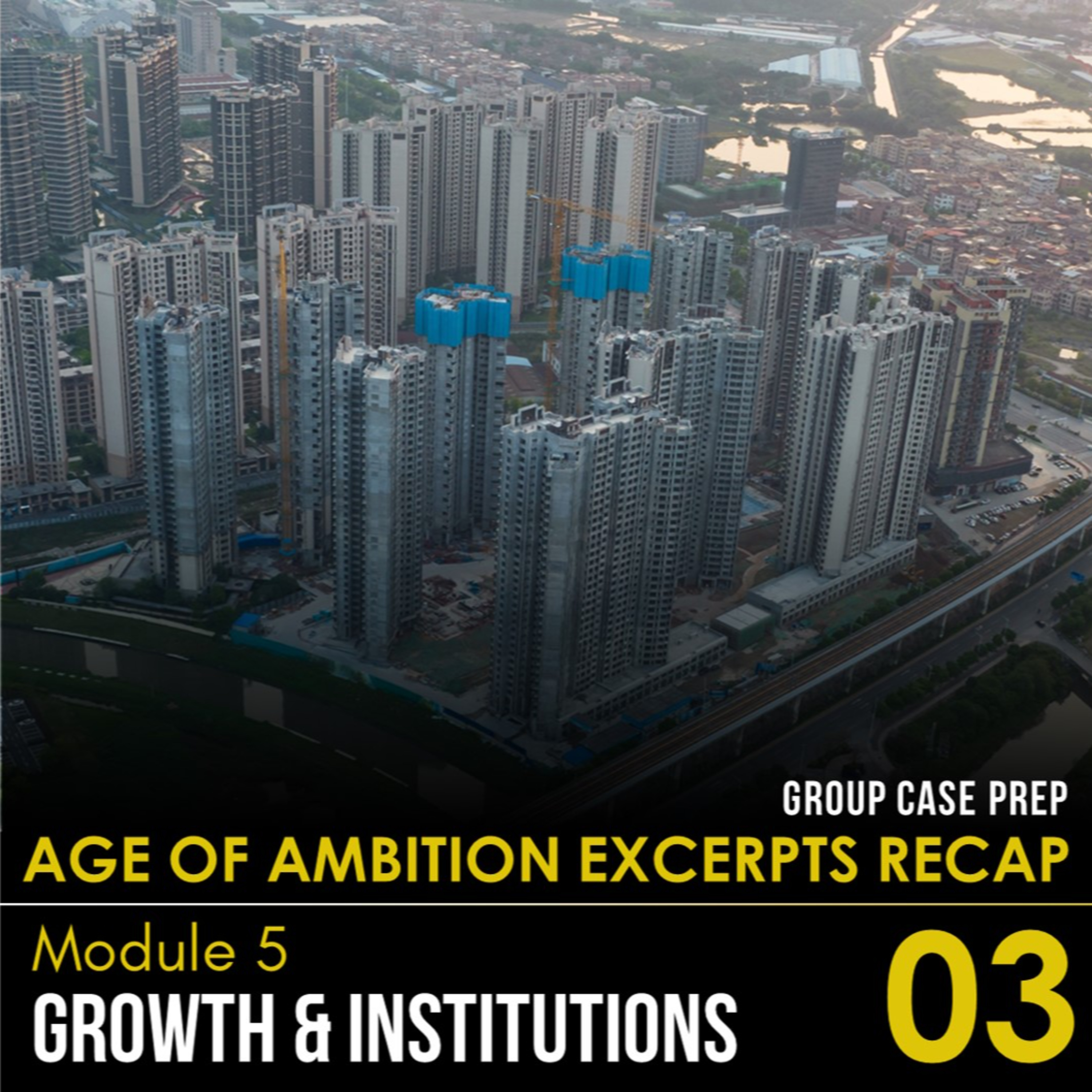 Dr. J's GMI Topic Overviews with Eve and WallyModule 5, Group Case Prep - Reading 3: Age of Ambition Excerpts Recap-"an account of the collision of two forces: aspiration and authoritarianism"Having explored Egypt in The Buried, we now turn our focus to China, which has an extremely different economic and political institutional environment. We do this again by focusing on lived experiences.Winner of the National Book Award and part of a Pulitzer Prize-winning team for investigative reporting, Evans Osnos spent eight years living in Beijing, witnessing the changes occurring from 2005-2013. The selected excerpts from Age of Ambition – Chasing Fortune, Truth, and Faith inthe New China capture the ways in which state in...2025-07-1720 min
Dr. J's GMI Topic Overviews with Eve and WallyModule 5, Group Case Prep - Reading 3: Age of Ambition Excerpts Recap-"an account of the collision of two forces: aspiration and authoritarianism"Having explored Egypt in The Buried, we now turn our focus to China, which has an extremely different economic and political institutional environment. We do this again by focusing on lived experiences.Winner of the National Book Award and part of a Pulitzer Prize-winning team for investigative reporting, Evans Osnos spent eight years living in Beijing, witnessing the changes occurring from 2005-2013. The selected excerpts from Age of Ambition – Chasing Fortune, Truth, and Faith inthe New China capture the ways in which state in...2025-07-1720 min Dr. J's GMI Topic Overviews with Eve and WallyModule 5, Group Case Prep - Reading 2: The Buried Excerpts Recap-"There's no nizam"We've relied heavily on real-time economic data to understand short-term economic trends & policy decisions. When exploring long-term economic growth, perspectives focused on lived experiences can show how institutions shape what feel possible, what talents are used, & what futures seem worth pursuing.MacArthur fellow and finalist for the National Book Award, Peter Hessler, spent a decade living in China, chronicling the country’s growth through the lives of ordinary citizens. In 2011, he and his family moved to Cairo during the Arab Spring. The selected excerpts from The Buried, An Archeology of the Eg...2025-07-1725 min
Dr. J's GMI Topic Overviews with Eve and WallyModule 5, Group Case Prep - Reading 2: The Buried Excerpts Recap-"There's no nizam"We've relied heavily on real-time economic data to understand short-term economic trends & policy decisions. When exploring long-term economic growth, perspectives focused on lived experiences can show how institutions shape what feel possible, what talents are used, & what futures seem worth pursuing.MacArthur fellow and finalist for the National Book Award, Peter Hessler, spent a decade living in China, chronicling the country’s growth through the lives of ordinary citizens. In 2011, he and his family moved to Cairo during the Arab Spring. The selected excerpts from The Buried, An Archeology of the Eg...2025-07-1725 min Dr. J's GMI Topic Overviews with Eve and WallyModule 5, Group Case Prep - Reading 1: Why Nations Fail, Chapter 3 RecapOur focus in Module 5 turns towards factors that affect the long-term growth rates, which are central to understanding industry transformation, poverty rates, and, in many cases, why nations fail.To prepare for Module 5, we recap Chapter 3 from Why Nations Fail by Nobel Prize winners Daron Acemoglu & James Robinson, establishing that long-term economic growth depends on a country's institutions: the formal and informal structures that constrain individual behavior in a society.Main Themes:Economic Institutions are structures that specifically shape incentives to pursue education, invest, innovate, trade, and accumulate capital. These include...2025-07-1725 min
Dr. J's GMI Topic Overviews with Eve and WallyModule 5, Group Case Prep - Reading 1: Why Nations Fail, Chapter 3 RecapOur focus in Module 5 turns towards factors that affect the long-term growth rates, which are central to understanding industry transformation, poverty rates, and, in many cases, why nations fail.To prepare for Module 5, we recap Chapter 3 from Why Nations Fail by Nobel Prize winners Daron Acemoglu & James Robinson, establishing that long-term economic growth depends on a country's institutions: the formal and informal structures that constrain individual behavior in a society.Main Themes:Economic Institutions are structures that specifically shape incentives to pursue education, invest, innovate, trade, and accumulate capital. These include...2025-07-1725 min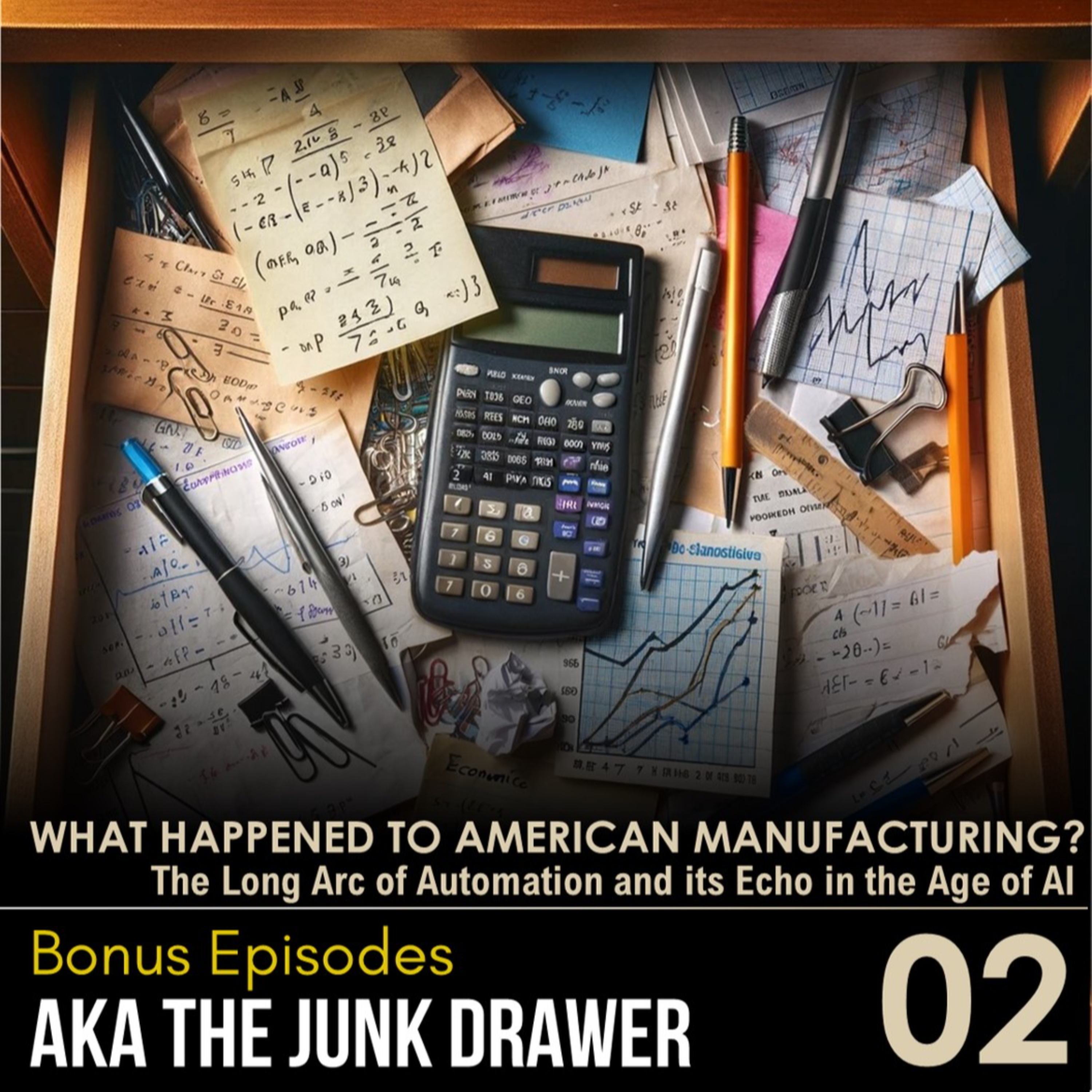 Dr. J's GMI Topic Overviews with Eve and WallyBonus Episode 2: What Happened to American Manufacturing? The Long Arc of Automation and its Echo in the Age of AIThis Bonus Session expands on our in-class GMI discussion on NAFTA and explores the long-term decline in U.S. manufacturing jobs, drawing from research by Acemoglu and Restrepo's 2022 paper, Tasks, Automation, and the Rise in U.S. Wage Inequality. While trade and globalization played a role, the research shows that automation is the primary force behind both the drop in manufacturing employment and the rise in wage inequality since 1980. Its effects have been broad, sustained, and nationwide, particularly displacing routine-intensive blue-collar jobs, even as total manufacturing output continued to grow.1. Manufacturing Employment DeclineIn 1950, ~1 in 3 U...2025-06-0124 min
Dr. J's GMI Topic Overviews with Eve and WallyBonus Episode 2: What Happened to American Manufacturing? The Long Arc of Automation and its Echo in the Age of AIThis Bonus Session expands on our in-class GMI discussion on NAFTA and explores the long-term decline in U.S. manufacturing jobs, drawing from research by Acemoglu and Restrepo's 2022 paper, Tasks, Automation, and the Rise in U.S. Wage Inequality. While trade and globalization played a role, the research shows that automation is the primary force behind both the drop in manufacturing employment and the rise in wage inequality since 1980. Its effects have been broad, sustained, and nationwide, particularly displacing routine-intensive blue-collar jobs, even as total manufacturing output continued to grow.1. Manufacturing Employment DeclineIn 1950, ~1 in 3 U...2025-06-0124 min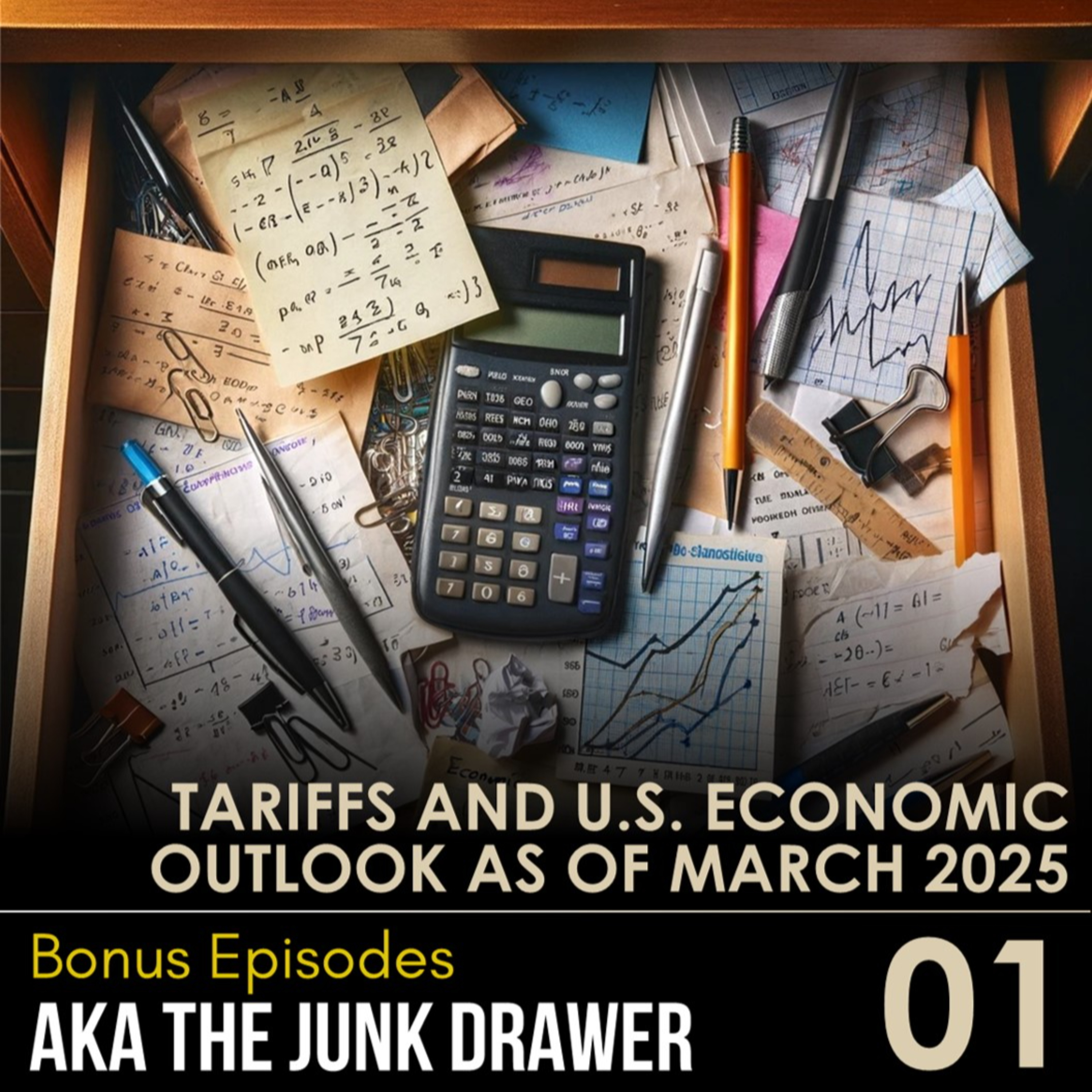 Dr. J's GMI Topic Overviews with Eve and WallyBonus Episode 1: Tariffs & US Economic Outlook as of March 2025This Bonus Session summarizes Dr. J's live discussion on tariffs and the US economy held on March 15, 2025.Main Points - TariffsTheoretical Irrelevance Post-Great Depression: Economists widely agree tariffs generally harm economies based on insights gained since the Great Depression.Presidential Power and Constitutional Authority: Presidents have limited short-term influence on economic strength but can negatively impact it, especially through tariffs. While Congress constitutionally controls tariffs, it has delegated substantial authority to the executive branch.Political Statements vs. Economic Principles: Economic claims by politicians should be viewed skeptically regardless of affiliation.2025-04-0214 min
Dr. J's GMI Topic Overviews with Eve and WallyBonus Episode 1: Tariffs & US Economic Outlook as of March 2025This Bonus Session summarizes Dr. J's live discussion on tariffs and the US economy held on March 15, 2025.Main Points - TariffsTheoretical Irrelevance Post-Great Depression: Economists widely agree tariffs generally harm economies based on insights gained since the Great Depression.Presidential Power and Constitutional Authority: Presidents have limited short-term influence on economic strength but can negatively impact it, especially through tariffs. While Congress constitutionally controls tariffs, it has delegated substantial authority to the executive branch.Political Statements vs. Economic Principles: Economic claims by politicians should be viewed skeptically regardless of affiliation.2025-04-0214 min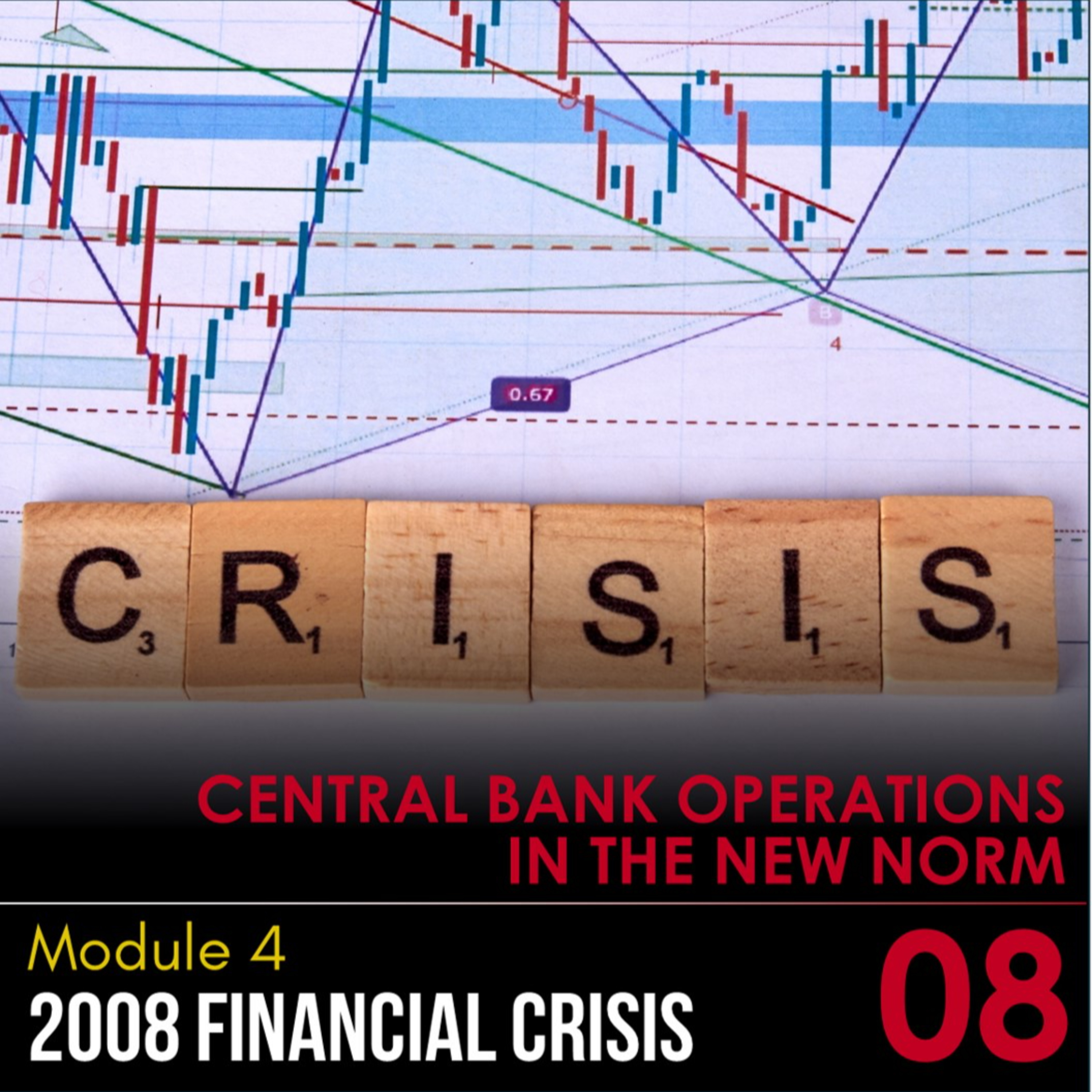 Dr. J's GMI Topic Overviews with Eve and WallyModule 4, Section 8: Central Bank Operations in the New NormOverview of Module 4, Section 8: Central Bank Operations in the New Norm, which discusses the evolution of the Fed's monetary policy operations, particularly the transition from a "corridor policy" to a "floor policy" following the 2008 financial crisis. Main Themes1. Shift from Corridor Policy to Floor PolicyCorridor Policy (Pre-2008): This regime operated when reserves in the banking system were scarce. The Federal Reserve used Open Market Operations (OMO) (buying and selling government securities) to adjust the money supply and steer the Federal Funds Rate (FFR) towards its target. Floor Policy (Post-2008): The period of significantly...2025-03-2812 min
Dr. J's GMI Topic Overviews with Eve and WallyModule 4, Section 8: Central Bank Operations in the New NormOverview of Module 4, Section 8: Central Bank Operations in the New Norm, which discusses the evolution of the Fed's monetary policy operations, particularly the transition from a "corridor policy" to a "floor policy" following the 2008 financial crisis. Main Themes1. Shift from Corridor Policy to Floor PolicyCorridor Policy (Pre-2008): This regime operated when reserves in the banking system were scarce. The Federal Reserve used Open Market Operations (OMO) (buying and selling government securities) to adjust the money supply and steer the Federal Funds Rate (FFR) towards its target. Floor Policy (Post-2008): The period of significantly...2025-03-2812 min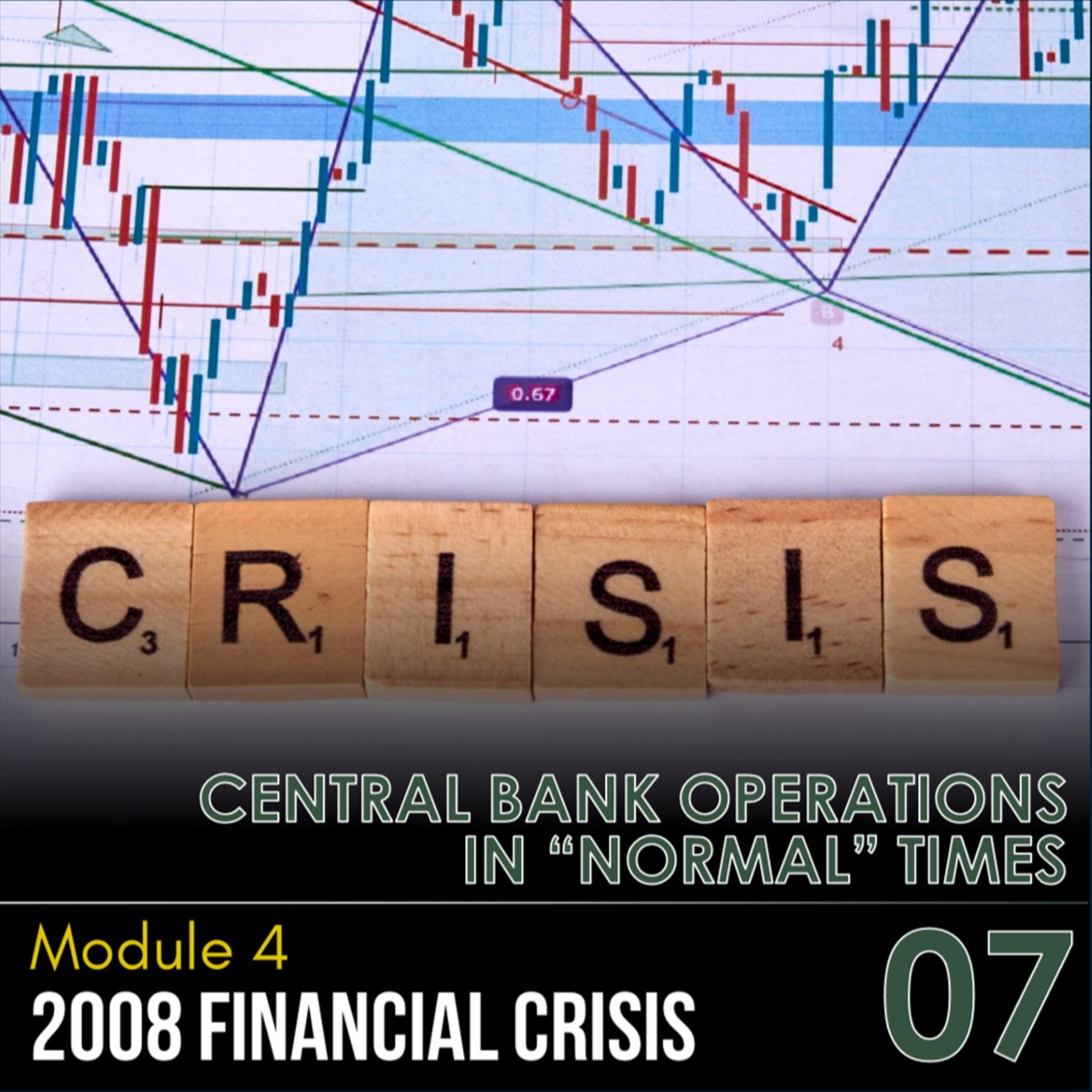 Dr. J's GMI Topic Overviews with Eve and WallyModule 4, Section 7: Central Bank Operations in "Normal" TimesOverview of Module 4, Section 7: Central Bank Operations in "Normal" Times, which discusses mechanisms through which Central Banks manage the overnight bank-to-bank lending rate during “normal” economic periods. i.e. in periods prior to significant events like the 2008 Financial Crisis.Main Themes1. The Overnight Bank-to-Bank Lending Rate as a Key Monetary Policy ToolThe overnight bank-to-bank lending rate (in the US, the federal funds rate), the interest rate at which banks lend reserves to each other overnight, is the central lever for monetary policy. Central banks aim to influence this rate to achieve broader economic obje...2025-03-2812 min
Dr. J's GMI Topic Overviews with Eve and WallyModule 4, Section 7: Central Bank Operations in "Normal" TimesOverview of Module 4, Section 7: Central Bank Operations in "Normal" Times, which discusses mechanisms through which Central Banks manage the overnight bank-to-bank lending rate during “normal” economic periods. i.e. in periods prior to significant events like the 2008 Financial Crisis.Main Themes1. The Overnight Bank-to-Bank Lending Rate as a Key Monetary Policy ToolThe overnight bank-to-bank lending rate (in the US, the federal funds rate), the interest rate at which banks lend reserves to each other overnight, is the central lever for monetary policy. Central banks aim to influence this rate to achieve broader economic obje...2025-03-2812 min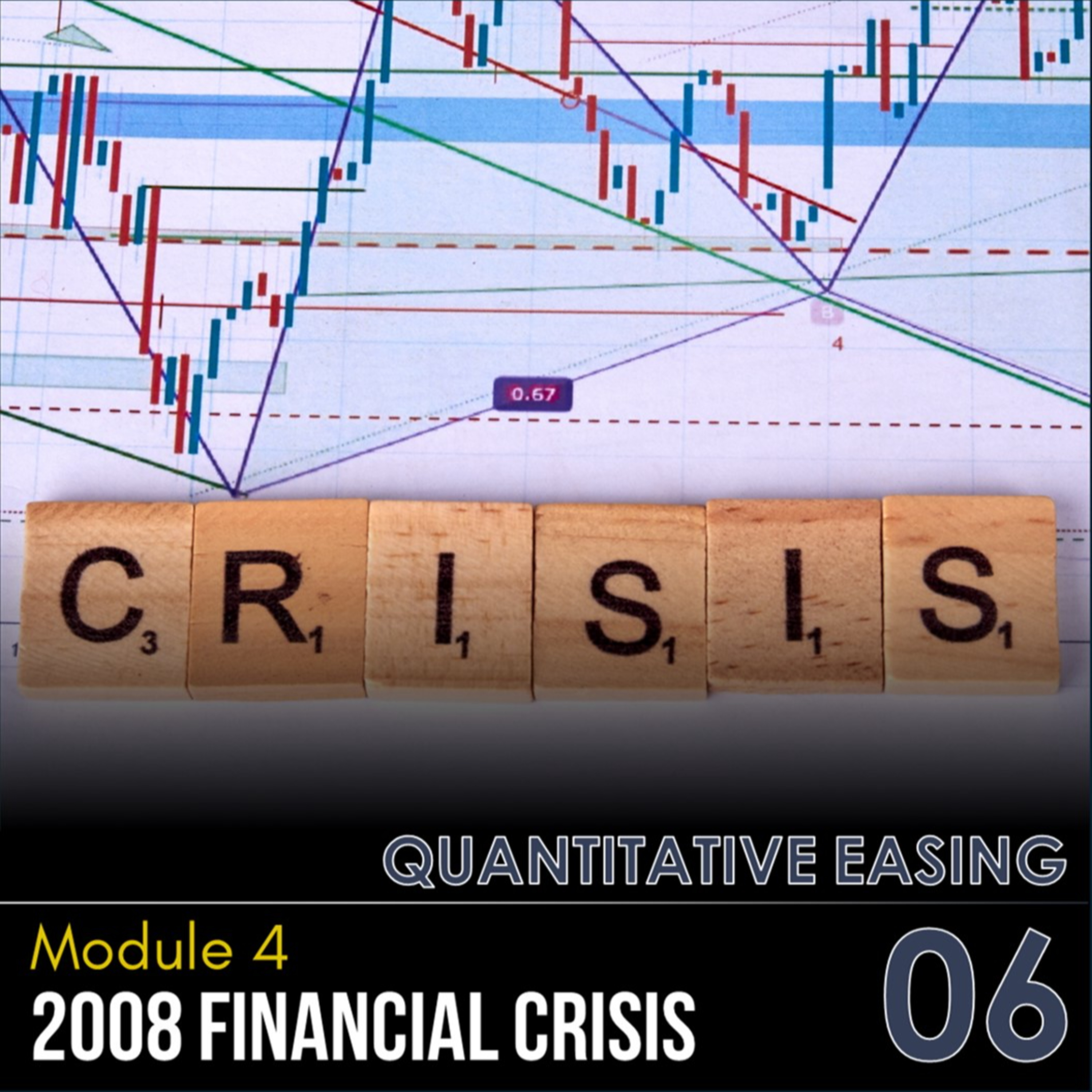 Dr. J's GMI Topic Overviews with Eve and WallyModule 4, Section 6: Quantitative EasingOverview of Module 4, Section 6: Quantitative Easing, regarding Quantitative Easing (QE) as implemented by the Federal Reserve, particularly during &after the 2008 Financial Crisis and during the COVID-19 pandemic.Main Themes1. Definition and Purpose of Quantitative Easing (QE)QE is described as credit easing without sterilization focused on a much larger range of assets, specifically those having long maturities.The primary goal during the Financial Crisis was to address the risk stemming from Asset-Backed Securities by purchasing them from banks &financial institutions.QE aimed to remove almost worthless assets off the banks’ balance sheets, significantly improving th...2025-03-2818 min
Dr. J's GMI Topic Overviews with Eve and WallyModule 4, Section 6: Quantitative EasingOverview of Module 4, Section 6: Quantitative Easing, regarding Quantitative Easing (QE) as implemented by the Federal Reserve, particularly during &after the 2008 Financial Crisis and during the COVID-19 pandemic.Main Themes1. Definition and Purpose of Quantitative Easing (QE)QE is described as credit easing without sterilization focused on a much larger range of assets, specifically those having long maturities.The primary goal during the Financial Crisis was to address the risk stemming from Asset-Backed Securities by purchasing them from banks &financial institutions.QE aimed to remove almost worthless assets off the banks’ balance sheets, significantly improving th...2025-03-2818 min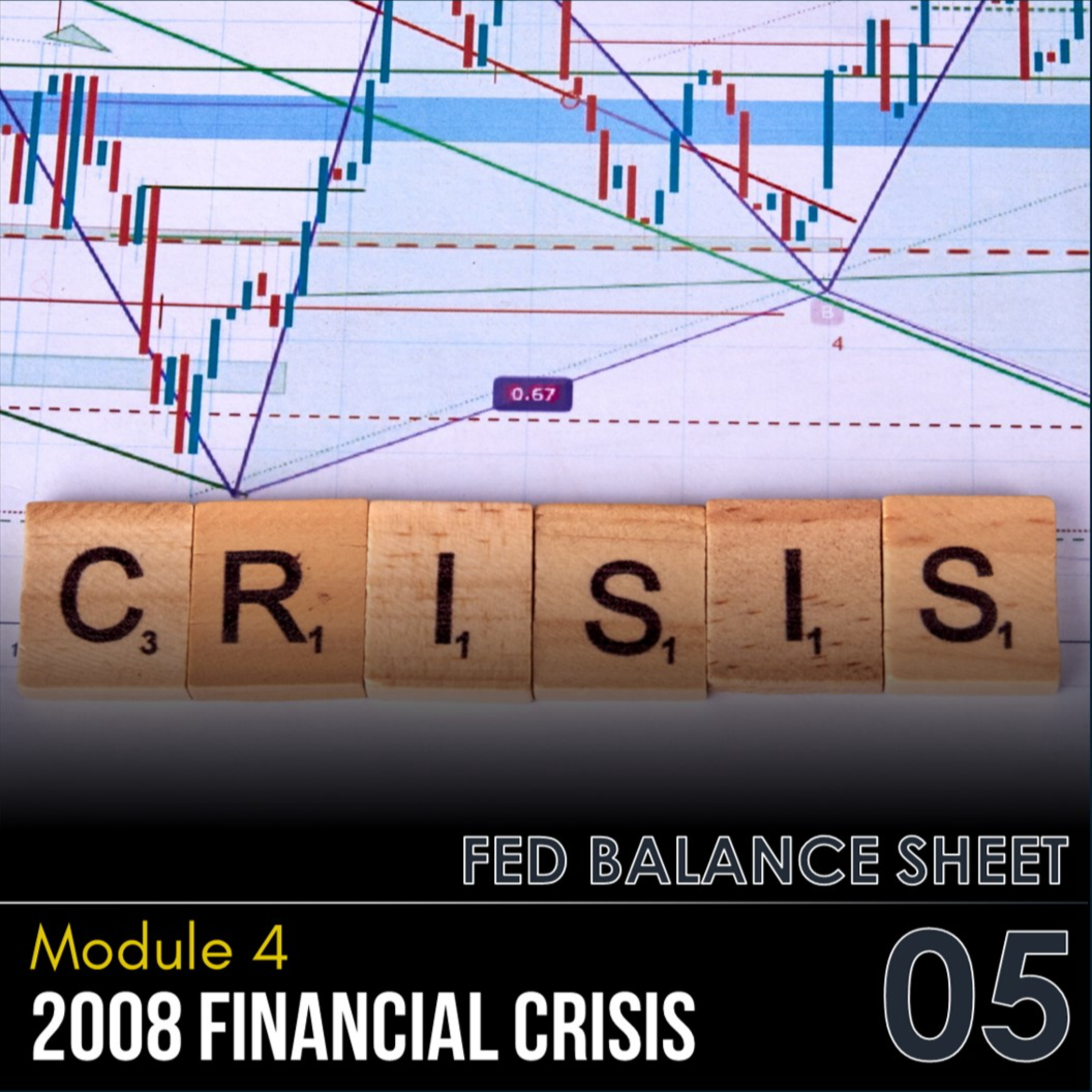 Dr. J's GMI Topic Overviews with Eve and WallyModule 4, Section 5: Fed Balance SheetOverview of Module 4, Section 5: The Financial Crisis, which introduces the Federal Reserve's balance sheet and the tools it employs to manage the money supply & influence interest rates.Main Themes1. Short-Term Collateralized Financial Products: Repurchase Agreements (Repos) and Reverse Repurchase Agreements (Reverse Repos) Repo (RP) A financial product involving the purchase of securities (generally Treasury securities) coupled with an agreement to sell them back at a future date for a slightly higher price. It's a short-term lending agreement used to earn a small return on excess cash with low risk.Central Banks use...2025-03-2617 min
Dr. J's GMI Topic Overviews with Eve and WallyModule 4, Section 5: Fed Balance SheetOverview of Module 4, Section 5: The Financial Crisis, which introduces the Federal Reserve's balance sheet and the tools it employs to manage the money supply & influence interest rates.Main Themes1. Short-Term Collateralized Financial Products: Repurchase Agreements (Repos) and Reverse Repurchase Agreements (Reverse Repos) Repo (RP) A financial product involving the purchase of securities (generally Treasury securities) coupled with an agreement to sell them back at a future date for a slightly higher price. It's a short-term lending agreement used to earn a small return on excess cash with low risk.Central Banks use...2025-03-2617 min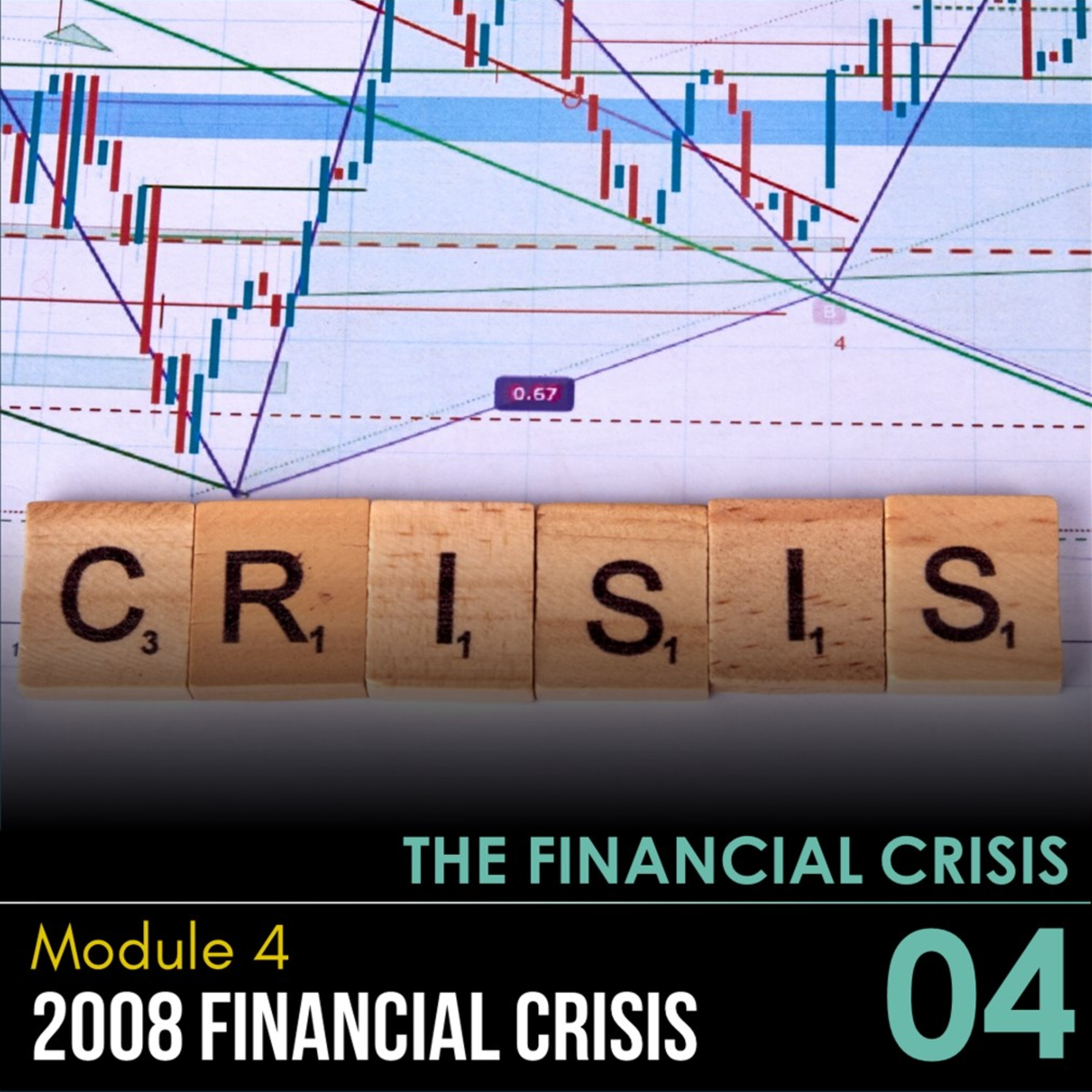 Dr. J's GMI Topic Overviews with Eve and WallyModule 4, Section 4: The Financial CrisisOverview of Module 4, Section 4: The Financial Crisis, which summarizes the four phases of the 2008 Financial Crisis, which ultimately resulted in a near collapse of the global financial system.Four Phases of The Financial Crisis:Phase 1: The Bursting of the Housing Bubble The crisis originated with a significant housing bubble. Home prices peaked nationally in July 2006 and subsequently dropped by 9% in less than two years, with some major cities experiencing declines of over 20%.Phase 2: ARM Credit CrunchThe increase in mortgage debt, particularly in the subprime market since 2000, was fueled...2025-03-2512 min
Dr. J's GMI Topic Overviews with Eve and WallyModule 4, Section 4: The Financial CrisisOverview of Module 4, Section 4: The Financial Crisis, which summarizes the four phases of the 2008 Financial Crisis, which ultimately resulted in a near collapse of the global financial system.Four Phases of The Financial Crisis:Phase 1: The Bursting of the Housing Bubble The crisis originated with a significant housing bubble. Home prices peaked nationally in July 2006 and subsequently dropped by 9% in less than two years, with some major cities experiencing declines of over 20%.Phase 2: ARM Credit CrunchThe increase in mortgage debt, particularly in the subprime market since 2000, was fueled...2025-03-2512 min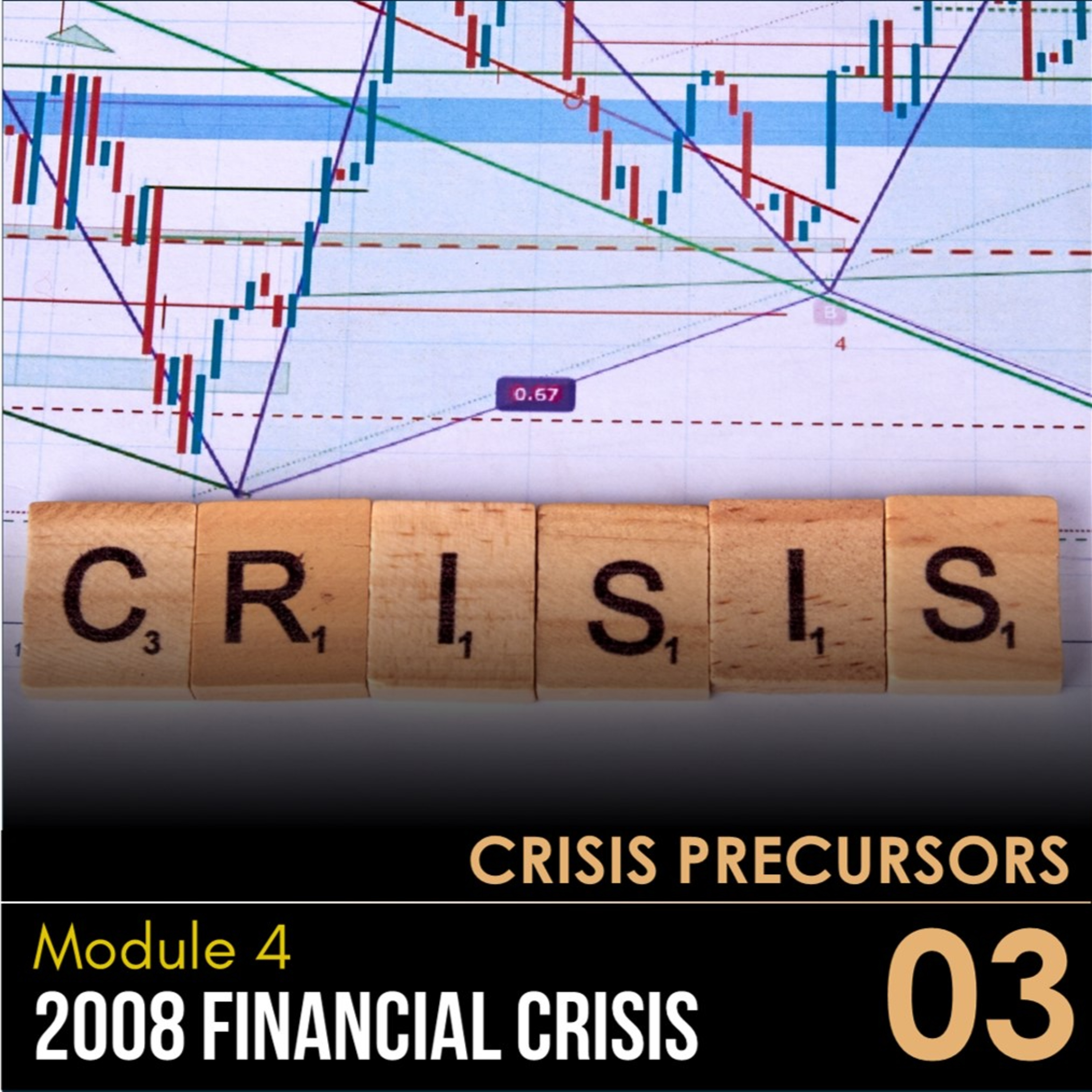 Dr. J's GMI Topic Overviews with Eve and WallyModule 4, Section 3: Crisis PrecursorsOverview of Module 4, Section 3: Crisis Precursors, which focuses on the events and conditions that led to the 2008 Financial Crisis.Main ThemesThe Rise and Proliferation of Asset-Backed Securities (ABS) The securitization of debt, particularly mortgages, played a central role in the lead-up to the crisis. ABS transformed illiquid loans into tradable assets, offering benefits like liquidity and risk transference for issuers and access to diversified assets for investors. However, this also obscured and amplified underlying risks. The Expansion of Subprime and Affordability Mortgages The growth of subprime mortgages (loans to borrowers with higher...2025-03-2514 min
Dr. J's GMI Topic Overviews with Eve and WallyModule 4, Section 3: Crisis PrecursorsOverview of Module 4, Section 3: Crisis Precursors, which focuses on the events and conditions that led to the 2008 Financial Crisis.Main ThemesThe Rise and Proliferation of Asset-Backed Securities (ABS) The securitization of debt, particularly mortgages, played a central role in the lead-up to the crisis. ABS transformed illiquid loans into tradable assets, offering benefits like liquidity and risk transference for issuers and access to diversified assets for investors. However, this also obscured and amplified underlying risks. The Expansion of Subprime and Affordability Mortgages The growth of subprime mortgages (loans to borrowers with higher...2025-03-2514 min Dr. J's GMI Topic Overviews with Eve and WallyModule 4, Section 2: Bank ContagionOverview of Module 4, Section 2: Bank Contagion, which is defined as the failure of one bank leading to the failure of another bank due to the interconnected nature of the financial system. The major sources of bank contagion are outlined as well as the structural elements that amplify it and the inherent trade-offs associated with a global banking system. Main ThemesInterconnectedness as the Foundation of Contagion Banks do not operate in isolation and their interconnectedness is the primary pathway for contagion. This interconnectedness is essential for a functional global financial system, enabling large investments, innovation...2025-03-2509 min
Dr. J's GMI Topic Overviews with Eve and WallyModule 4, Section 2: Bank ContagionOverview of Module 4, Section 2: Bank Contagion, which is defined as the failure of one bank leading to the failure of another bank due to the interconnected nature of the financial system. The major sources of bank contagion are outlined as well as the structural elements that amplify it and the inherent trade-offs associated with a global banking system. Main ThemesInterconnectedness as the Foundation of Contagion Banks do not operate in isolation and their interconnectedness is the primary pathway for contagion. This interconnectedness is essential for a functional global financial system, enabling large investments, innovation...2025-03-2509 min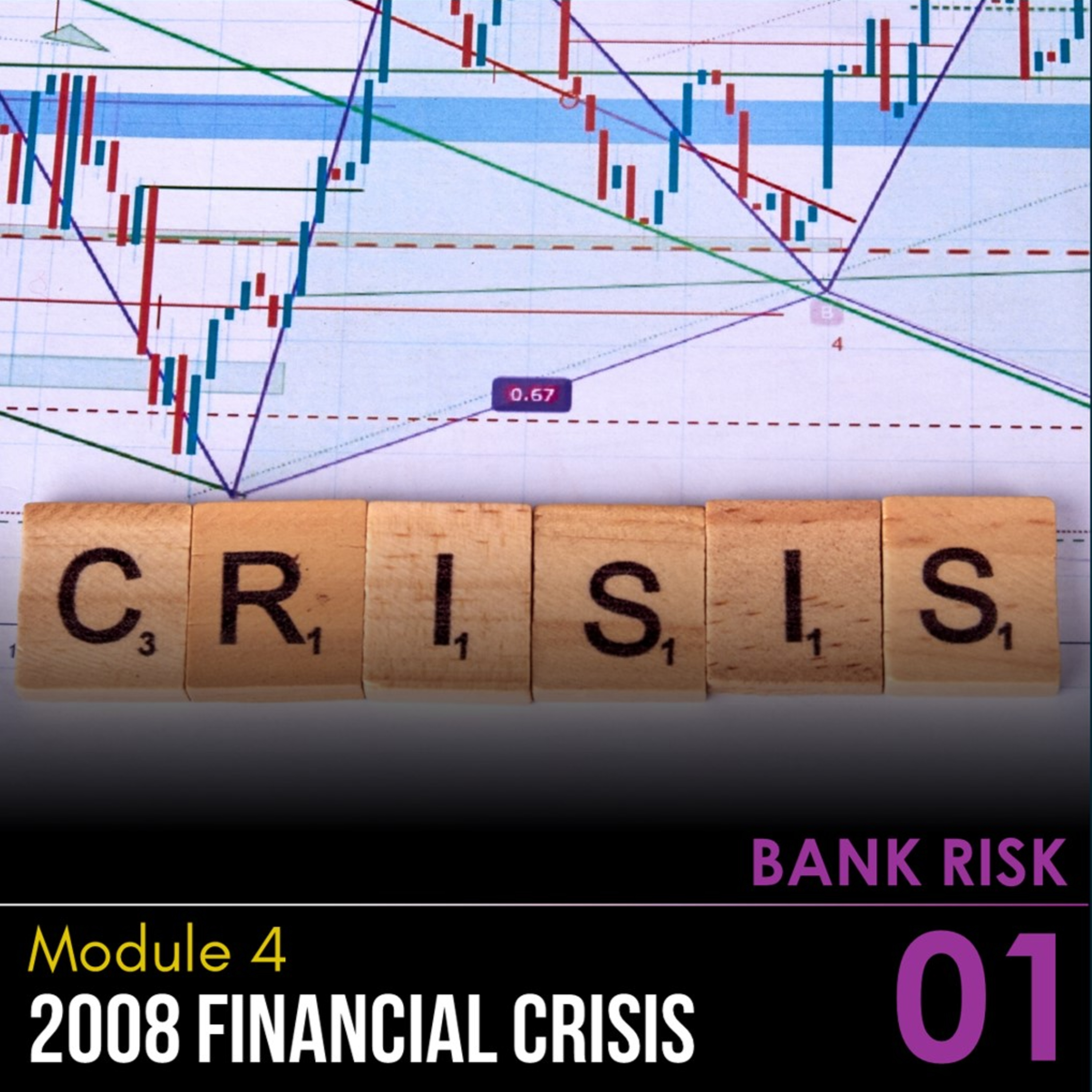 Dr. J's GMI Topic Overviews with Eve and WallyModule 4, Section 1: Bank RiskOverview of Module 4, Section 1: Bank Risk, covering the three primary sources of bank risk and the regulations designed to mitigate this risk. An understanding of these sources of bank risk is key for comprehending the potential vulnerabilities within the financial system, how these manifested in the Financial Crisis of 2007-2009, and how the post-Financial Crisis regulations were designed to enhance the resilience of banks and contribute to overall global financial stability. Main ThemesThis section identifies three primary sources of bank risk that can lead to insolvency:Loss of Asset Value (Capital Inadequacy Risk...2025-03-2518 min
Dr. J's GMI Topic Overviews with Eve and WallyModule 4, Section 1: Bank RiskOverview of Module 4, Section 1: Bank Risk, covering the three primary sources of bank risk and the regulations designed to mitigate this risk. An understanding of these sources of bank risk is key for comprehending the potential vulnerabilities within the financial system, how these manifested in the Financial Crisis of 2007-2009, and how the post-Financial Crisis regulations were designed to enhance the resilience of banks and contribute to overall global financial stability. Main ThemesThis section identifies three primary sources of bank risk that can lead to insolvency:Loss of Asset Value (Capital Inadequacy Risk...2025-03-2518 min Mayhem and MISfitsIT takes a StrategyYouTube video of Jeremy Petranka, Assistant Dean of the Master of Quantitative Management (MQM) and Master of Management Studies (MMS) programs and Associate Professor of the Practice in Economics at Duke University, discussing IT Strategy: https://youtu.be/vzB1HVt6_sk
2023-01-1634 min
Mayhem and MISfitsIT takes a StrategyYouTube video of Jeremy Petranka, Assistant Dean of the Master of Quantitative Management (MQM) and Master of Management Studies (MMS) programs and Associate Professor of the Practice in Economics at Duke University, discussing IT Strategy: https://youtu.be/vzB1HVt6_sk
2023-01-1634 min Boosting Your Financial IQ41: Harnessing Data to Make Informed Decisions With Jeremy PetrankaWhat if it was possible to harness large exchanges of data and use it to make informed decisions at every level of the organization? The future of a successful company strategy is founded upon effective management and interpretation of key business analytics.This week, Steve had the pleasure of interviewing a true expert and brilliant mind in the fields of strategy, economics, and data analytics. Jeremy Petranka is the Assistant Dean of the Master of Quantitative Management(MQM) program at the Fuqua School of Business at Duke University. He received his Ph.D. in Economics from the...2022-12-0953 min
Boosting Your Financial IQ41: Harnessing Data to Make Informed Decisions With Jeremy PetrankaWhat if it was possible to harness large exchanges of data and use it to make informed decisions at every level of the organization? The future of a successful company strategy is founded upon effective management and interpretation of key business analytics.This week, Steve had the pleasure of interviewing a true expert and brilliant mind in the fields of strategy, economics, and data analytics. Jeremy Petranka is the Assistant Dean of the Master of Quantitative Management(MQM) program at the Fuqua School of Business at Duke University. He received his Ph.D. in Economics from the...2022-12-0953 min The Storage Investor ShowNeed to Make a Change? How to Pivot with Dr. Jeremy PetrankaIn This EpisodeWhat is a pivotWhy it’s important to tell your story and connect the dotsImpostor syndrome and how to deal with itBudgeting for your pivotHow to network the right wayGuest Info:Dr. Jeremy Petranka is the Assistant Dean of the Master of Quantitative Management program at Duke University’s Fuqua School of Business. Dr. Petranka received his Ph.D. in Economics from UNC-Chapel Hill in 2009 and has since taught undergraduates and MBA students at Indiana University’s Kelley School of Business and UNC-Chapel Hill. Prior to his career...2020-12-2155 min
The Storage Investor ShowNeed to Make a Change? How to Pivot with Dr. Jeremy PetrankaIn This EpisodeWhat is a pivotWhy it’s important to tell your story and connect the dotsImpostor syndrome and how to deal with itBudgeting for your pivotHow to network the right wayGuest Info:Dr. Jeremy Petranka is the Assistant Dean of the Master of Quantitative Management program at Duke University’s Fuqua School of Business. Dr. Petranka received his Ph.D. in Economics from UNC-Chapel Hill in 2009 and has since taught undergraduates and MBA students at Indiana University’s Kelley School of Business and UNC-Chapel Hill. Prior to his career...2020-12-2155 min